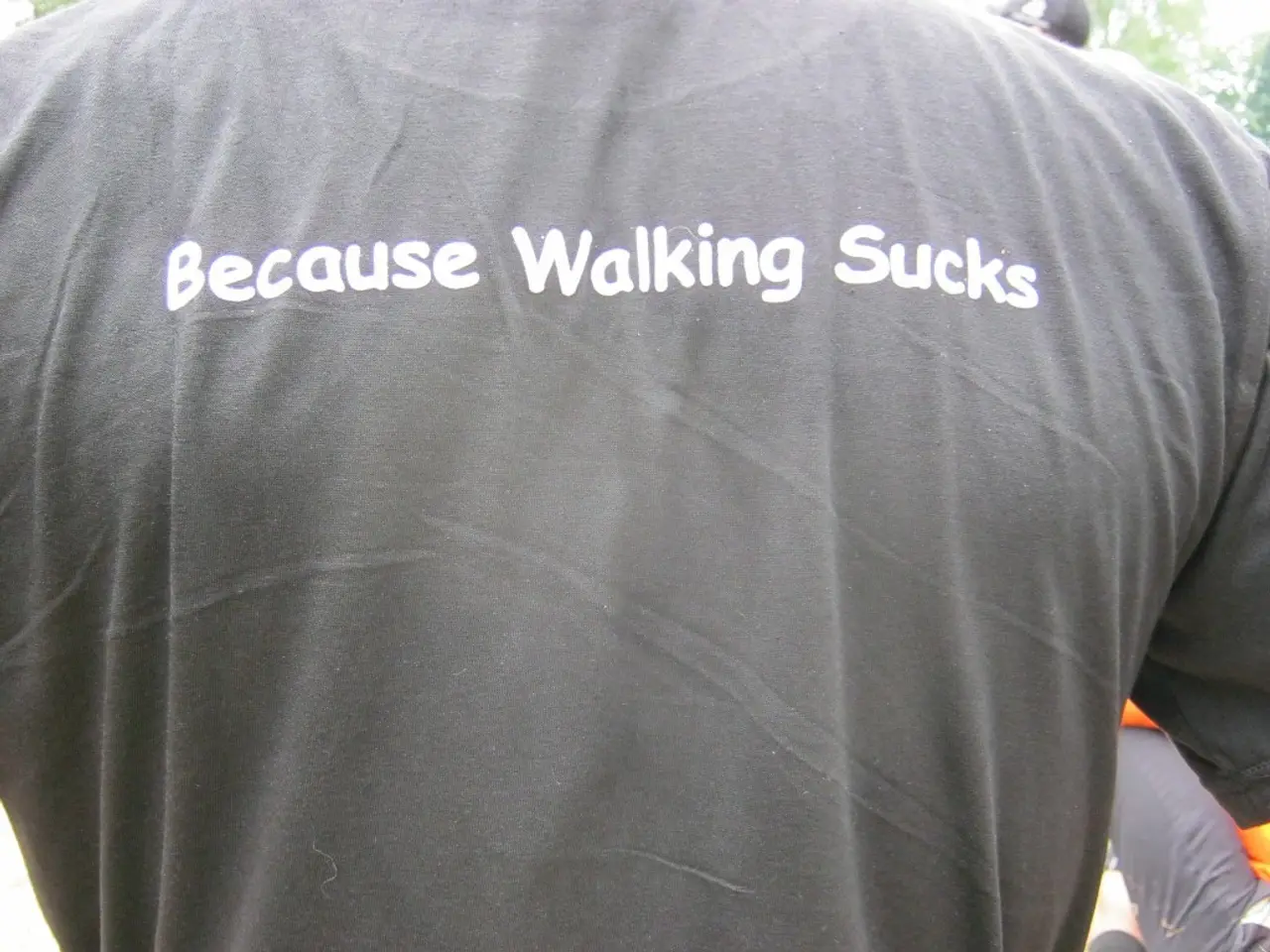Is Reverse Treadmill Stride Effective in Any Way?
In the realm of fitness trends, one that has recently captured the attention of social media, particularly TikTok, is backwards walking on a treadmill. This unique exercise, which offers a fresh twist on traditional walking, has gained popularity due to its novelty and the challenges it presents for both fitness and coordination[1][3].
Backwards walking on a treadmill engages muscles differently, focusing on the hamstrings, glutes, and calves[2]. This variation in muscle activation can contribute to muscle strengthening and improved knee function and stability, potentially offering relief for knee pain by altering the mechanical stress on the knee joint[5].
However, this exercise is not without its risks. Backwards walking requires good balance and coordination, which can be challenging for beginners, especially on a treadmill. Improper form or excessive strain could potentially exacerbate existing back issues[6]. Treadmill use in reverse can also be hazardous if not done correctly, as it requires careful attention to surroundings and treadmill settings to avoid accidents.
Fitness experts recommend starting slowly and ensuring proper form to enjoy the benefits while minimizing the risks. Dr. Agnew typically has people try backwards walking for 5 to 10 minutes[7]. The goal is not to increase speed, but to get comfortable with the speed you're at[8]. If you start feeling tired, losing balance, or experiencing discomfort while walking backwards, it is advised to stop.
Incorporating incline into backwards walking can enhance balance and provide a cardiovascular workout[4]. To make the most of backwards walking for knee health, one must focus on fully straightening the legs[9]. Walking backwards can help fire up the quads, the large muscles along the front of the thighs, which can help increase joint stability and reduce discomfort in the knee joint.
While backwards walking is claimed to alleviate knee pain, mitigate injuries at the knee joint, and strengthen hamstrings, addressing knee pain requires more than just walking backwards[10]. Seeing a physical therapist is the best way to determine the wisest approach.
A 2013 study found that backwards walking is helpful for improving symptoms for people with knee osteoarthritis when combined with conventional treatments[11]. However, the benefits of backwards walking for preventing knee issues are not well-established, and other prevention tactics like strength training may be more effective.
A 2020 study found that backward walking can help mitigate back aches by increasing the activation and endurance of the muscles that help support and stabilize the spine[12]. As you walk backwards on a treadmill, think about reaching your toes behind you first, then pushing through your entire foot, and finally pushing through your heel as you straighten your leg.
Physical therapist and run coach Spencer Agnew and Nicole Haas, PT, DPT, were consulted to separate fact from fiction about backwards walking. Dr. Haas suggests that backwards walking is "an interesting thing to try for variety" in a gym routine, but it may not be a magic bullet for relieving knee pain[13]. Backwards walking can fit well as a warm-up or cooldown to a strength routine or other workout.
In conclusion, backwards walking on a treadmill offers unique benefits but also requires careful consideration of potential risks and proper technique to maximize its advantages while minimizing its drawbacks. Fitness enthusiasts and medical professionals alike agree that it's a worthwhile exercise to try, particularly for those seeking a fresh challenge in their fitness journey.
- Incorporating backwards walking into a health-and-wellness routine can offer unique fitness benefits, such as strengthening the hamstrings, glutes, and calves, and potentially alleviating knee pain by altering mechanical stress on the knee joint.
- The exercise, which is gaining popularity on social media apps like TikTok, can also be beneficial for improving back aches by increasing the activation and endurance of muscles that support the spine.
- News regarding the effects of backwards walking on knee health is mixed. While a 2013 study found it helpful for knee osteoarthritis symptoms, other studies have not well-established its preventive effects, and strength training may be more effective.
- To maximize the benefits and minimize the risks, fitness experts recommend starting slowly, focusing on proper form, and ensuring balance, particularly for beginners.
- In the realm of fitness-and-exercise trends, backwards walking on a treadmill offers a fresh twist on traditional walking, but it requires care and attention, especially regarding treadmill settings and surroundings, to avoid accidents and potential exacerbation of existing back issues.




